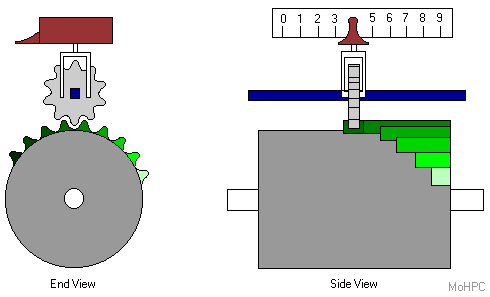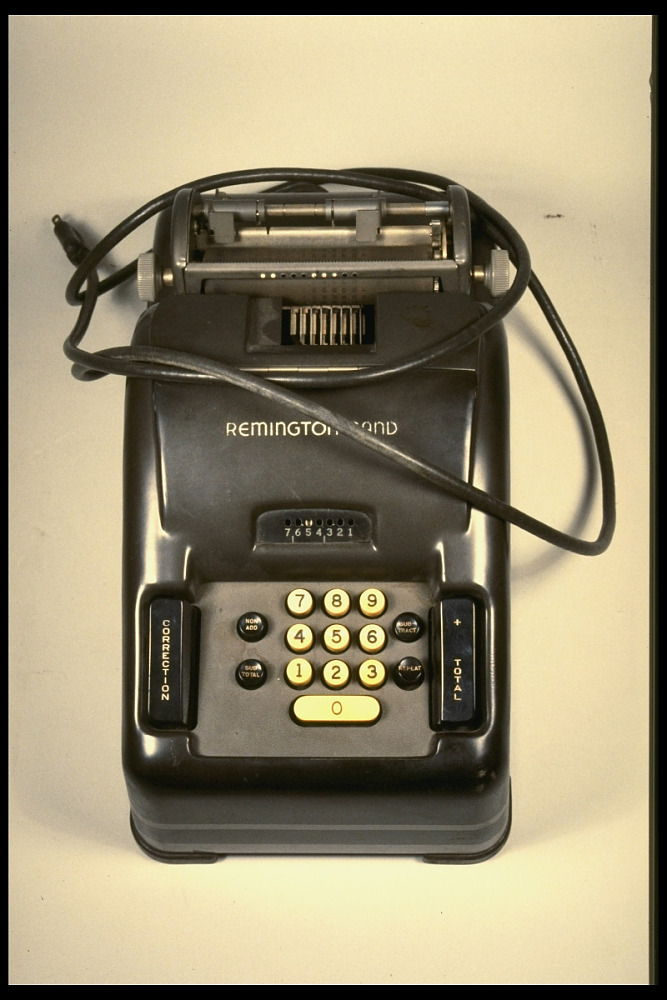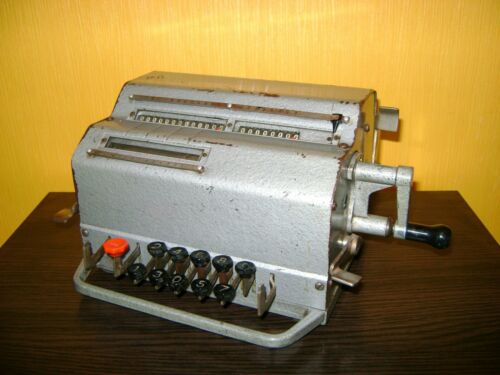The stepped drum used in Leibniz’s and Thomas’s machines solved the problem of having a variable number of cogs by using a drum in which the number of cogs varied along its length. A gear moved along the drum’s length would engage a different number of cogs depending on its position. The position of the number gear is determined by where the user set the digit pointer along a scale (shown in the side view). In this case, the index is set to four, and the number gear just engaged the four longer cogs on the drum. As the drum continues to rotate, the number gear will miss the five shorter cogs.

The basic problem of this design was how to move a gear. The user placed the stylus in a hole, and the wheel or slide was moved by the appropriate amount. However, there was no way for the user to be sure that the correct number had been entered. Also, in the case of multiplications and divisions, the same number would have to be “dialed in” over and over. These problems lead designers to produce more complicated machines. (Read more)
The Stepped Drum machines were used for a long time but they had their problems. The need for the large drums made the machines very large and heavy and they forced both the levers and the display digits to be a long distance apart. In 1872-1877 Frank Baldwin, and later, Willgodt Odhner independently developed calculating machines based on the pinwheel or variable cog wheel. (Read more)

When one of the setting levers is moved to a number then that number of pins is raised on the corresponding pin-wheel (i.e. moving a lever to ‘7’ raises 7 pins). Turning the crank handle clockwise rotates all the pin-wheels. The raised pins act as gear teeth and advance the individual product register wheels by the number of pins, so adding the set number to the product register.
Instructions for basic arithmetic operations with a rotary pinwheel calculator
Items on display in the Archives
Remington Rand printing adding machine. United States: New York, Elmira. 1930s–1940s

Famosa Pinwheel calculator. Manufacturer: Fàbricia de Articulos Mecanicos para Oficina, Barcelona, Spain. 1958

Underwood Olivetti Summa Quanta 20 (motorized adding machine). Designed by engineer Claus Capellaro and industrial designer Marcello Nizzoli. 1960s

VK-1 Schetmash arithmometer. USSR, 1950s



